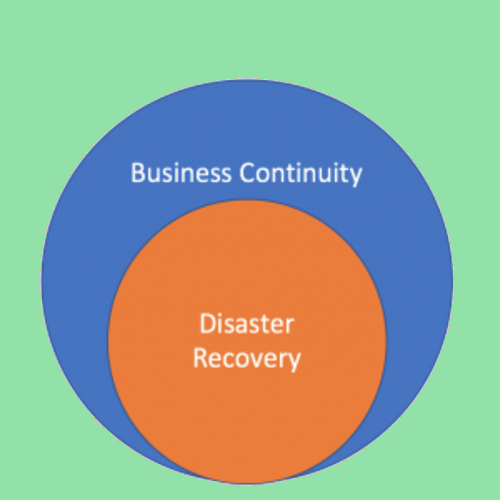Disaster Recovery in Cloud Computing
Ensuring Business Continuity and Seamless Disaster Recovery

Business Continuity and Disaster Recovery
It is important that institutions, whether through hardware breakdown, cyberattack, or even natural disasters, be well prepared for all sorts of disasters. In the event of a catastrophe, a company’s business continuity is primarily based on reproducing processes and records.
Data loss can have a significant financial effect on organizations, and even a decrease in consumer trust may damage their credibility. Consequently, it is important to carefully prepare and establish a strategy that will fix future crises in the long run to mitigate the detrimental effect on a business.
Disaster recovery (DR) allows business continuity in a disaster without intervening with the operation. Many big companies devote between 2% and 4% of their IT budgets to the preparation of emergency recovery, while other companies pay up to 25% to minimize infrastructure risks.
Disaster Recovery Plan for Cloud Services – Key Considerations
In addition to the requisite measures in ensuring the system/operation reconstruction, a disaster recovery strategy takes care of disaster preparedness and response.
In the last couple of years, 80% of global IT businesses have encountered at least one significant fault or device breakdown that obliges them to have an appropriate disaster response plan, Gartner’s 2017 Safety and Risk Survey said.
Disaster recovery planning takes into account:
- Data and services: DR plans must take all data and programs independently into account. If the data contains client accounts, software applications include the activities of a company.
- Dependencies: Software dependencies need to be established and, before the operation of the current software, some systems can need to load additional software.
- Personnel: The primary staff engaged in system and data re-establishment is also necessary to recognize.
- Compliance: Entities in some industries, such as health care, may need, before retrieving their data, to ensure regulatory compliance and protection.
Types of Cloud Disaster Recovery
Cloud-based data protection services are of three types:
- Backup as a Service (BaaS)
- Recovery as a Service (RaaS)
- Disaster Recovery as a service (DRaaS)
Benefits of Implementing Cloud-based Disaster Recovery
There are several benefits of hosting a DR program in the cloud. Key benefits include:
- Elimination of back-up using disks and tapes
- Off-site storage of mission-critical data
- Cost reduction
- Reliable and easier implementation
- Faster recovery
- Scalability
- Scalability
Contact Us
Partner with us to make the best of your disaster recovery plans focused on the cloud. To get the ball rolling, please visit us at @ www.neolite.in or email us at info@neolite.in.

 WhatsApp us
WhatsApp us